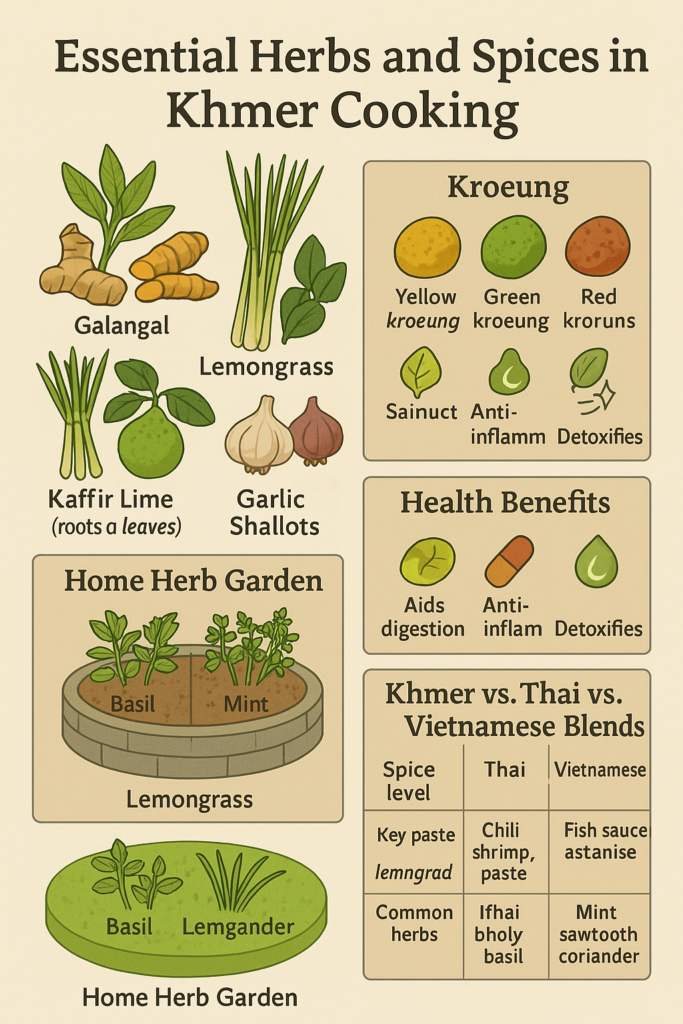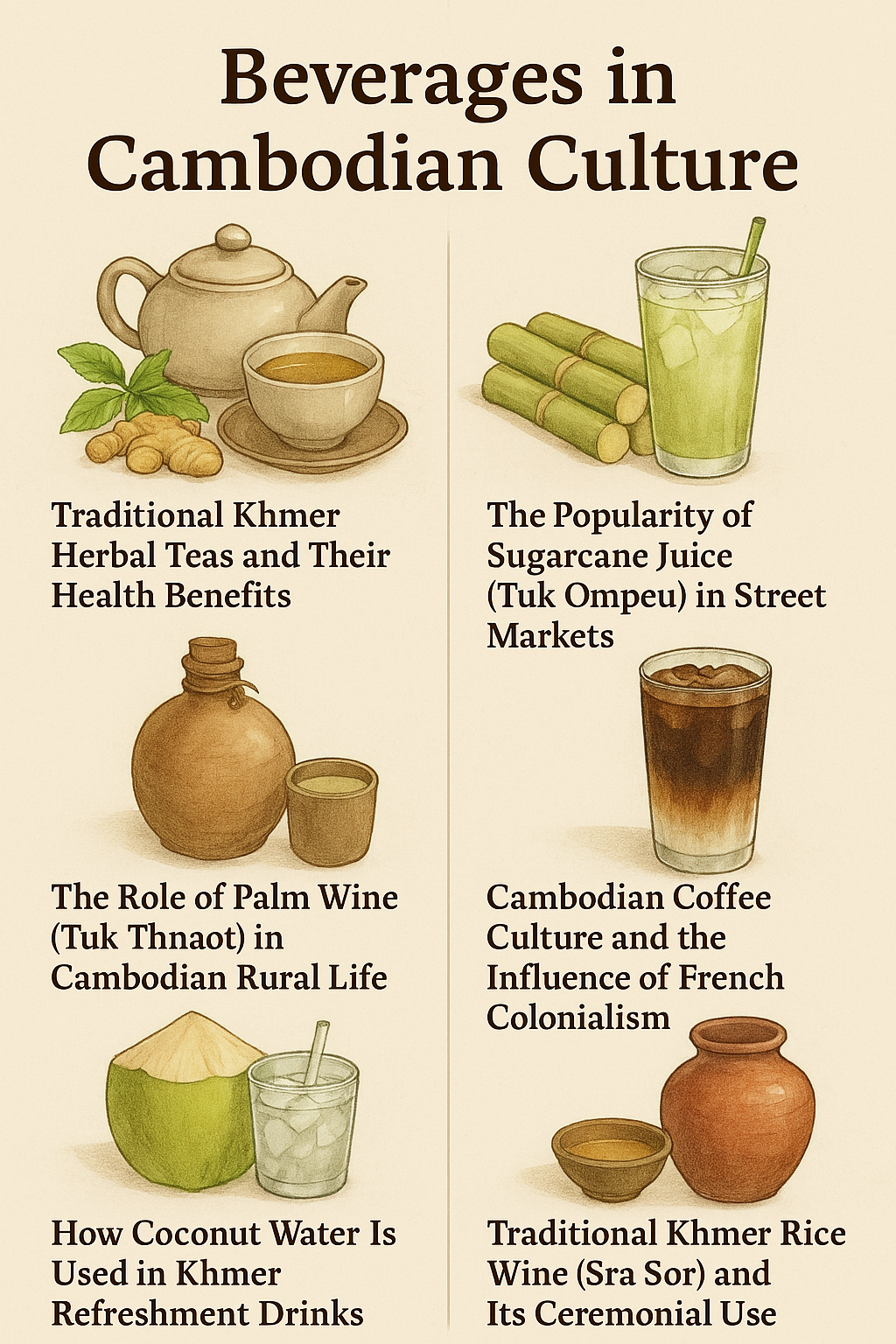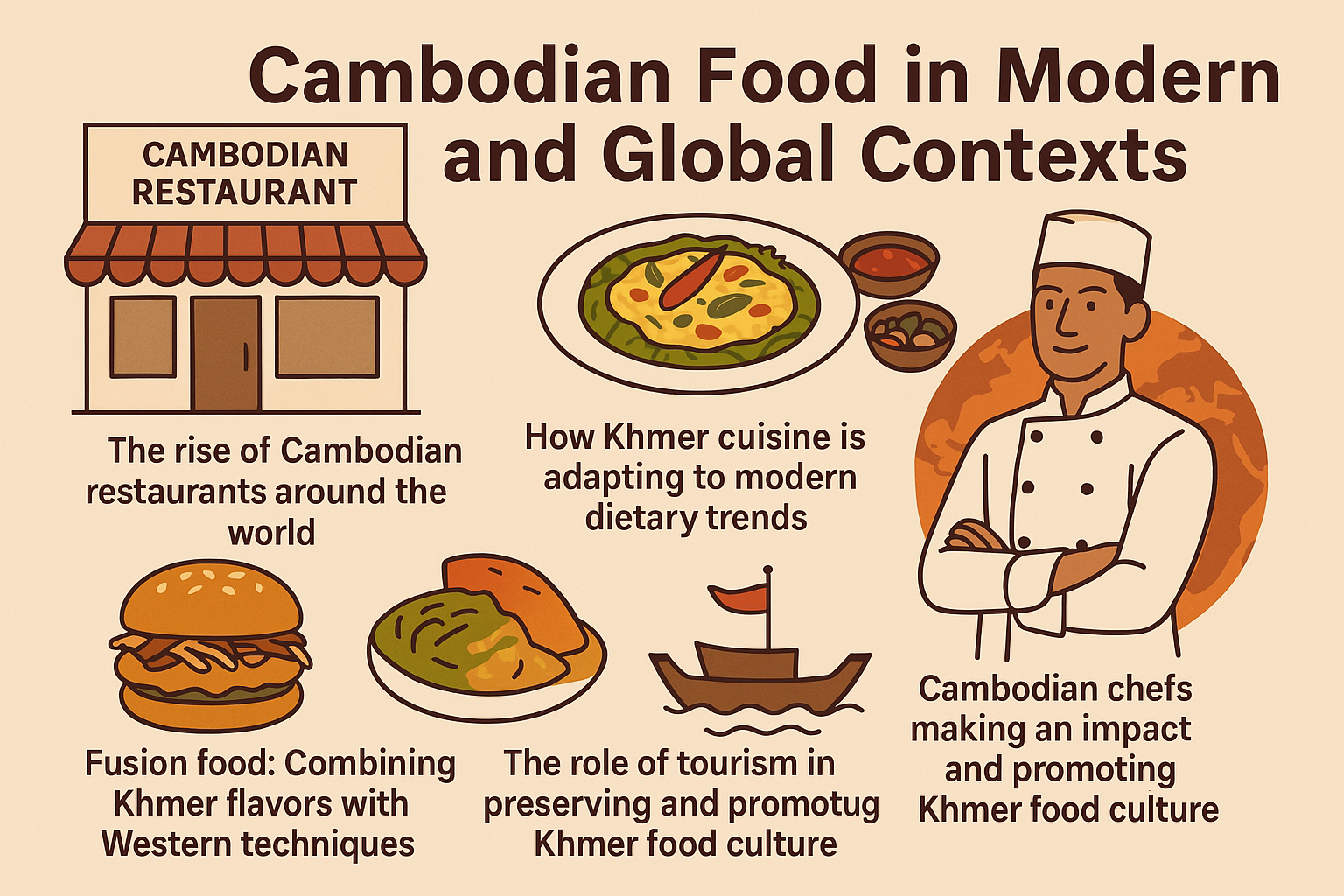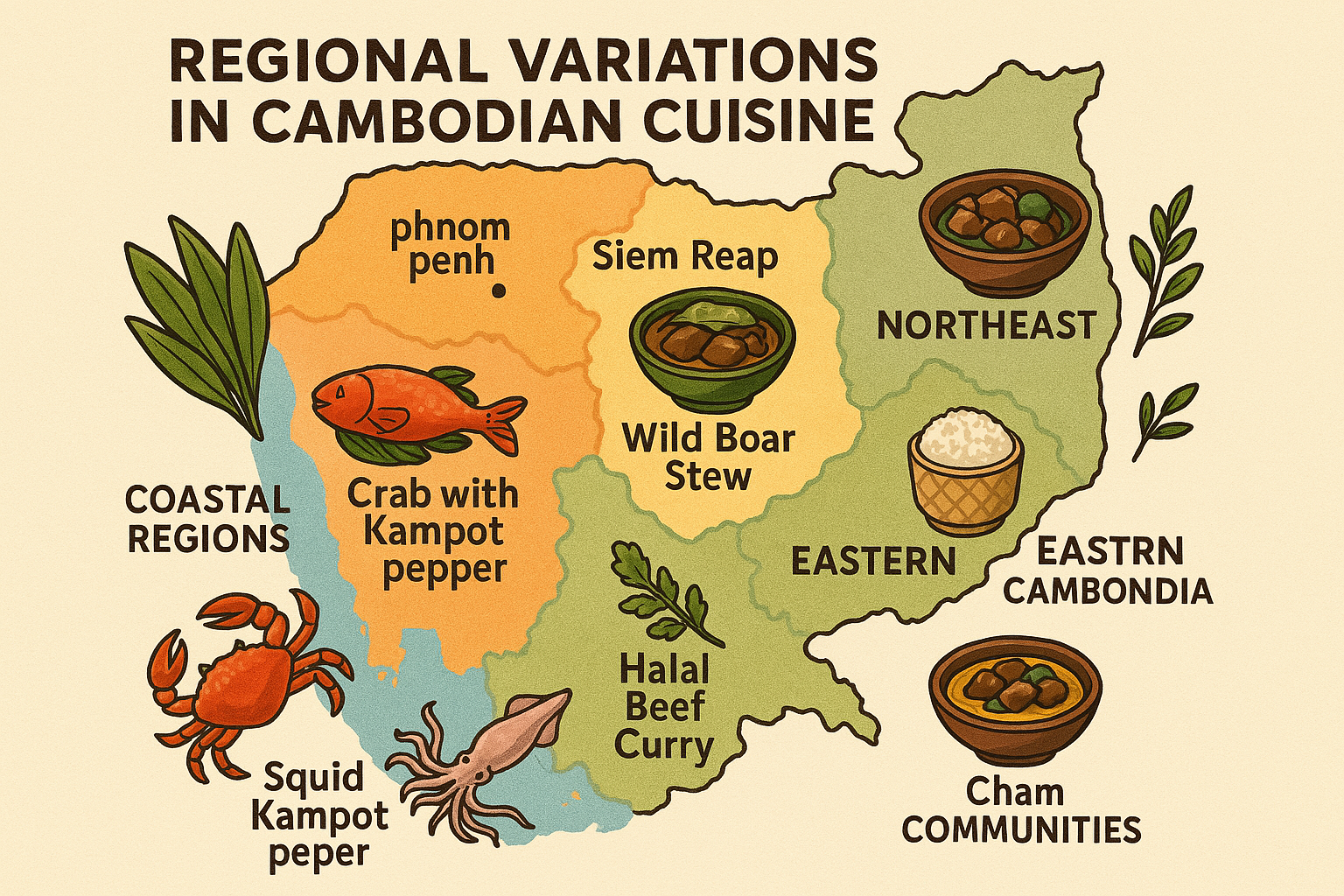Khmer cuisine is a rich tapestry of flavors, deeply rooted in Cambodia’s cultural heritage and biodiversity. At its core are aromatic herbs and spices that not only define the flavor profile of Khmer dishes but also reflect the country’s agricultural traditions, medicinal beliefs, and culinary ingenuity. From the essential spice paste known as kroeung to the use of locally grown herbs in everyday cooking, this article explores the pivotal role herbs and spices play in Cambodian cuisine.
Essential Khmer Spices and Their Unique Flavors

In Cambodian cooking, spices are not about fiery heat but about creating complex layers of aroma and depth. Among the most essential are:
- Galangal (romdeng): A cousin of ginger with a sharp, citrusy flavor; often used in soups and stews.
- Kaffir lime (sleuk krouchserch): The fragrant rind and leaves are used for their intense aroma in curries and salads.
- Turmeric (romiet): Adds a warm, earthy note and vibrant golden color, used in both savory and ceremonial dishes.
Other key ingredients include lemongrass, garlic, shallots, fingerroot (k’cheay), and dried red chilies—all of which are often pounded together to form traditional pastes.
Kroeung: The Signature Khmer Spice Paste
At the heart of Cambodian cooking lies kroeung, a versatile spice paste made from a blend of fresh herbs and roots. There are several variations of kroeung:
- Yellow kroeung: Made with turmeric and used in dishes like Amok.
- Green kroeung: Uses more lemongrass and kaffir lime, often for grilled meats.
- Red kroeung: Includes dried red chilies, used for bolder curries and stir-fries.
Kroeung is laboriously prepared using a mortar and pestle, releasing oils and aromas that define Khmer flavor. This paste is often the foundation of classic dishes such as Samlor Korko (mixed vegetable stew) and Trei Amok (steamed fish curry).
Cambodian vs. Thai and Vietnamese Spice Blends
While Cambodian cuisine shares some ingredients with Thai and Vietnamese kitchens, the overall flavor profile is distinct:
| Feature | Cambodian (Khmer) | Thai | Vietnamese |
|---|---|---|---|
| Spice level | Mild to moderate | Often very spicy | Mild with umami notes |
| Key paste (kroeung) | Lemongrass, galangal, turmeric | Shrimp paste, chili, lemongrass | Fish sauce, herbs, star anise |
| Common herbs | Kaffir lime, holy basil | Thai basil, cilantro | Mint, sawtooth coriander |
| Umami source | Prahok (fermented fish paste) | Fish sauce and shrimp paste | Fish sauce and fermented shrimp |
Cambodian dishes tend to balance sweetness, saltiness, and bitterness, with restrained heat and a deeper earthiness thanks to prahok and turmeric.
The Health Benefits of Herbs Used in Cambodian Food
Khmer culinary traditions have long embraced the healing power of herbs. Many ingredients serve dual purposes: flavor and medicine.
- Turmeric: Known for anti-inflammatory and antioxidant properties.
- Lemongrass: Aids digestion and has antimicrobial effects.
- Galangal: Helps with stomach ailments and inflammation.
- Fingerroot: Used to treat colds, coughs, and as a natural tonic.
- Kaffir lime: The rind and leaves are thought to detoxify the blood and boost immunity.
These herbs are often used fresh, maximizing both their flavor and health benefits.
How Khmer Households Grow and Use Fresh Herbs
In Cambodian homes, herbs are grown right outside the kitchen or in pots along balconies and courtyards. Commonly grown herbs include:
- Basil varieties (holy and Thai basil)
- Coriander (cilantro)
- Mint
- Pandan leaves
- Makrut lime and lemongrass
These herbs are snipped fresh daily and tossed into soups like samlor machu (sour soup), salads like pleah sach ko (beef ceviche), or used as garnish in noodle dishes.
Home cooks often prepare kroeung in batches and store it for convenience, continuing the tradition of grinding fresh ingredients by hand with a mortar and pestle.
The Importance of Locally Sourced Ingredients in Traditional Recipes
Cambodian cuisine thrives on freshness. Locally sourced herbs and spices are preferred over imported ones, not only for flavor but for cultural authenticity.
- Markets overflow with freshly harvested lemongrass and turmeric.
- Rural families often forage or grow their own herbs.
- Using ingredients from one’s own land is seen as an act of spiritual and ancestral continuity.
This deep connection to the land reflects the Buddhist values of self-reliance and harmony with nature embedded in Cambodian society.





